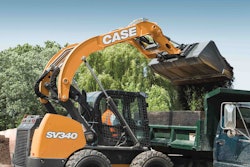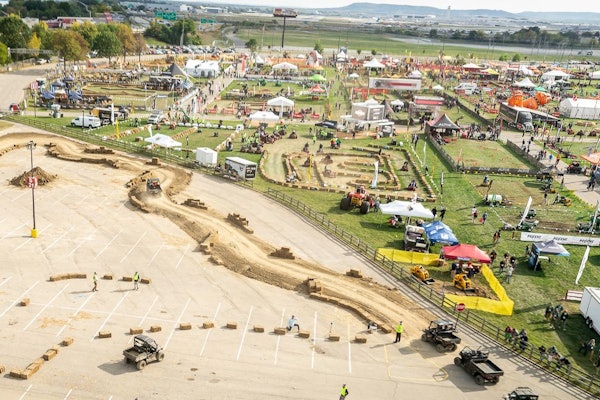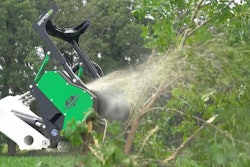 Photo: Stihl
Photo: StihlJust because handheld pruners, loppers, chainsaws, and the like are available at the nearest home improvement store does not automatically mean homeowners are qualified to administer proper tree care.
Arboriculture is a science-based industry and pruning is just one of the complex aspects of the discipline. Even professionals at times can fail when it comes to performing the proper techniques and practices.
Like any other field, procedures are always changing over time as more research is conducted, and it is not a good idea to stick to former habits simply for tradition’s sake. You could end up harming the tree if you fail to remain current on the new practices.
Benefits of pruning
Some homeowners may not see the point in pruning, arguing that trees in the woods seem to get along just fine without it, but the trees near their home also run the risk of damaging their house or property if not cared for properly.
 Mark Chisholm
Mark ChisholmPhoto: Stihl
“A lot of the trees you see in the news where something fails, like a big lead falls out and breaks on a house, it’s something that wasn’t really cared for properly,” says Mark Chisholm, tree expert and three-time International Society of Arboriculture (ISA) Tree Climbing Champion. “I think by not pruning or not addressing the issues you’re just left at the mercy of what always happens and eventually all trees die or fall apart or fail from gravity at one point in time.”
Tree care professionals can remove dead, dying, diseased, crowded or weak limbs ensuring the tree remains healthy, safe and attractive.
While Chisholm believes that all trees benefit from pruning, he cautions they shouldn’t all be given a blanket form of pruning.
“You need to be real sure that you’re acting like a little bit of a detective to try to understand what’s going on internally with the tree and what the tree really needs,” he says.
An example of this is how older trees, also known as over-mature trees, do not benefit well from thinning practices. Instead, they tend to need limb reductions to lessen the end weight as the tree weakens with its age and weight.
Prime time for pruning
It is often said that pruning during the dormant season is the ideal time to make any cuts, as arborists can see the branches easily with no foliage and the trees are less vulnerable to infection.
“A lot of people talk about pruning in the dormant season because it’s the better for trees and I think in some cases it definitely is scientifically sound,” Chisholm says. “For example, trees in areas where you’re battling certain diseases where in the wintertime the disease is inactive like, let’s say oak wilt. A lot of parts of the country deal with oak wilt and during most of the season even pruning dead wood out of the tree can create wounds on the tree that allow the disease to take over the tree or enter the tree at that time so that’s one of the definite times you want to prune in the wintertime.”
However, just like there shouldn’t be blanket pruning practices, it’s important to not fall into the same habit of unconditional pruning every tree and shrub in the winter.
“I think there’s one negative that you don’t hear a lot of people talking about and that’s the fact that every pruning cut is like a wound and every time you make a pruning cut, it actually is a wound, and you need that wound to wall over and it takes the growing season more or less for that to start to happen,” Chisholm says. “So you have a good period of time where maybe you don’t have any wound closure when you prune early in the winter in particular, so that’s kind of a newer idea. A lot of people haven’t spoken about it until recently. It’s not something that’s really common knowledge, and I’m kind of mixed on it.”
An example of when a tree wouldn’t benefit from winter pruning is a certain flowering species that could be robbed of its blooms for the upcoming season because it requires pruning at a different time of the year.
“There’s definite pluses and minuses depending on what type of tree and what type of situation you’re dealing with,” Chisholm says.
Techniques to avoid
While Chisholm says there are many pruning mistakes out there, the most common ones he sees is people failing to differentiate between trees and shrubs, as well as cutting the wrong part of the limb, damaging how the tree grows from then on.
“I think probably on that note, the most common problem I see that people do when they’re making pruning cuts is that they damage the trunk tissue and trunk and limb tissue are two separate things,” he says.
He says proper cuts should be made just outside the branch collar where it is all branch tissue, to avoid trunk damage.
“It tends to be the shortest cut possible, meaning not a weird angle cut,” Chisholm says. “Usually it’s a point A to point B, based on whatever angle you need to make it the shortest cut possible is usually the proper cut in my eyes.”
Lion tailing is an example of a process that was popular in the northeast when Chisholm first started, but soon after it became a widely known “no-to-do” process.
 Photo: Stihl
Photo: Stihl“We learned early on to stop doing that because of the effects it has on the tree long term,” he says. “Same thing with topping. Topping is the most common that that people know is wrong, yet it’s still around today.”
While the logic for this practice can vary – improving light penetration, stimulating new growth, etc. – the fact of the matter is that it mutilates the tree and prevents it from being able to return to its natural form.
Chisholm believes the practice continues on because if the tree is not topped too severely, it can bounce back in the spring with a lot of vibrant foliage.
“To the average person they look at that and they’ll think ‘Wow the tree liked what I did because it’s now more shapely,'” he says. “‘It looks more like a big lollypop and has all types of green leaves.’ So, they think that’s fine and they don’t understand that it’s not an immediate problem that happens. It’s a long-term issue that you create for the way the tree starts to react over time. That’s when it creates more and more problems when the tree starts to regrow.”
Pruning sealants
Like other heated topics in the green industry, there are camps both for and against the use of pruning sealants, but most arboriculture authorities, including the ISA, argue that wound dressing is ineffective.
“What I’ve heard is that they don’t do any help for the tree in most scenarios,” Chisholm says. “They don’t do anything to help create any barrier. They don’t help the tree start to wall up the wound quicker or better. The only thing it is still used for, for the most part, is oak wilt and things of that nature where you can help create a little bit of a safety net for that disease so you get the wound closure before it’s affected by something like oak wilt.”









